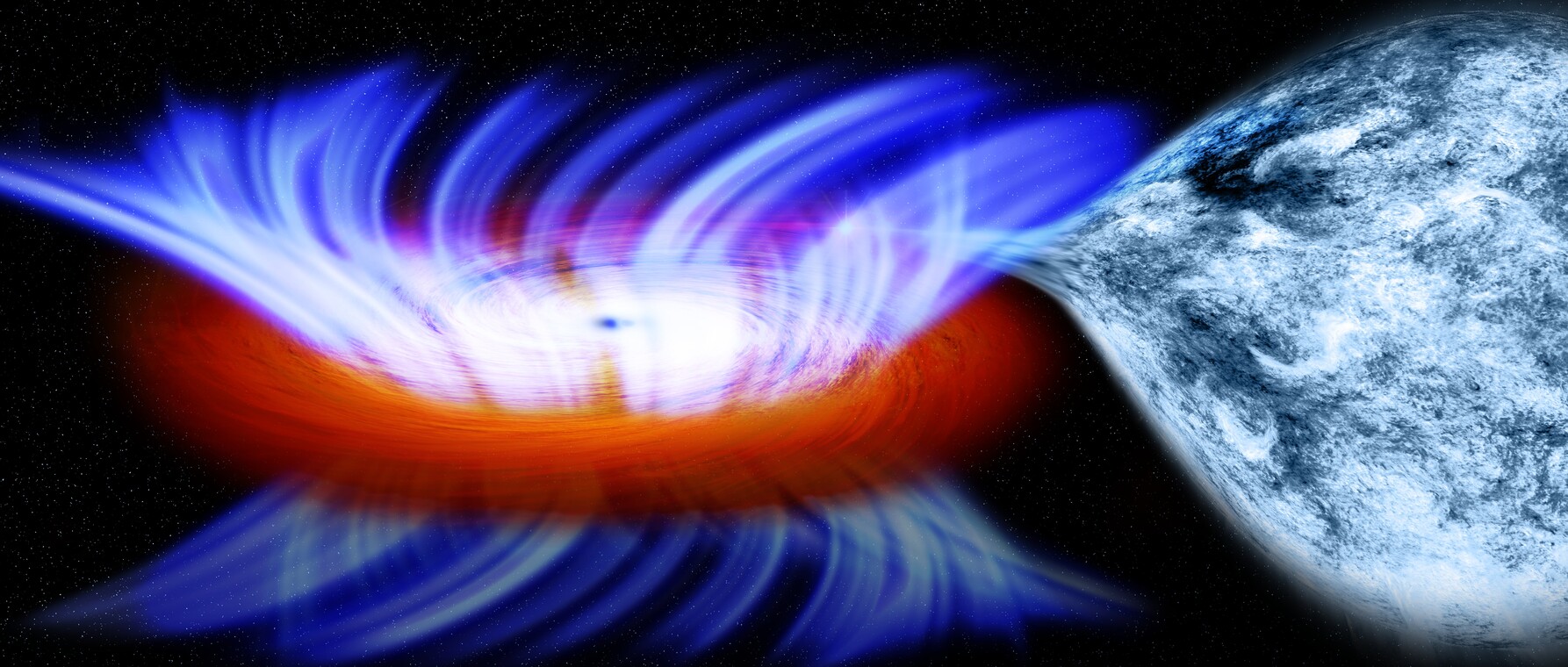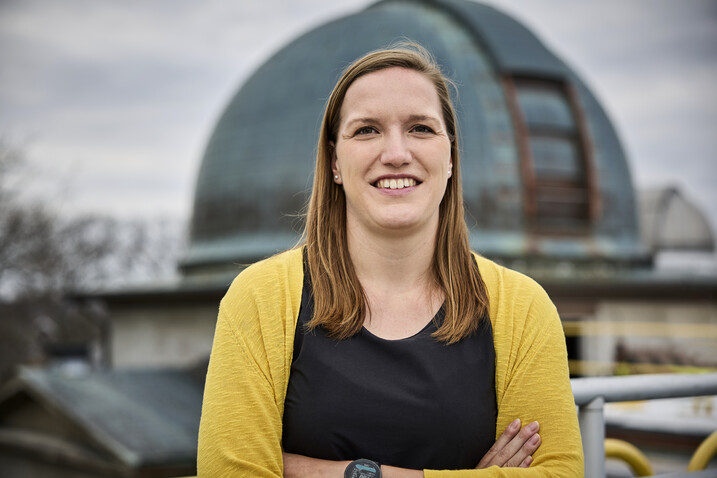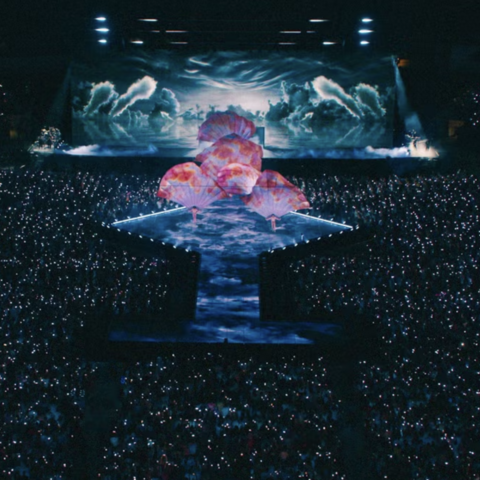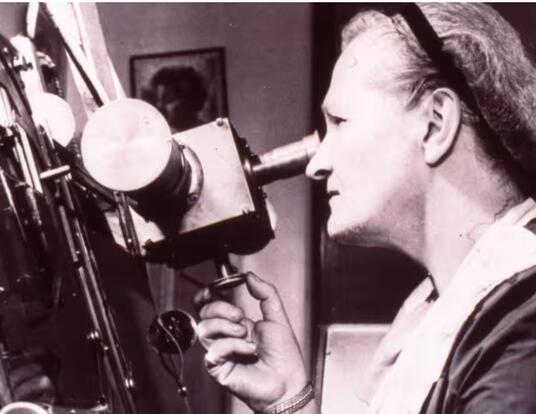Streamlining the Search for Black Holes
Bringing data science to the study of stars

Research at Risk: Since World War II, universities have worked with the federal government to create an innovation ecosystem that has yielded life-changing progress. Now much of that work may be halted as funding is withdrawn. Find out more about the threats to medical, engineering, and scientific research, as well as how Harvard is fighting to preserve this work—and the University's core values.
Floor Broekgaarden was rifling through her dad’s library in the basement of her childhood home in the Netherlands. A particular volume caught her eye: A Brief History of Time by the late theoretical physicist Stephen Hawking. Curious, the 14-year-old took it with her and spent months trying to understand Hawking’s ideas about space, time, and special relativity. She became particularly interested in one cosmic phenomenon: black holes.
“They seemed like these extreme and mysterious objects in our universe,” she says. “I was fascinated.”

Broekgaarden brings that childhood fascination with the cosmos to her research as a PhD student in astronomy at Harvard’s Graduate School of Arts and Sciences. In her 2023 Harvard Horizons project “Gravitational Wave Paleontology: A New Frontier to Explore the Lives of Stars to the Edge of Our Observable Universe,” she merges astrophysics and big data in her quest to provide new insights into the death—and life—of stars.
Smaller and More Challenging
Daniel Holz, a professor at the University of Chicago who sits on Broekgaarden’s dissertation committee, says that the study of black holes advances understanding of fundamental physics and the origins of the cosmos. “They provide extreme tests of the theory of general relativity,” he says. “They also teach us about the birth and evolution of the first stars, the age and composition of the universe, and a host of other important topics in astronomy.”
Most of the black holes identified and studied by astronomers so far are supermassive. Scientists are not sure how they form. One possibility is that when one particularly massive star collapses on itself, it accretes gas and other stars or black holes to grow to a size that can reach to millions or even billions of times its original mass. Because supermassive black holes are so immense, astronomers can infer their existence from the way that a galaxy’s stars revolve around them or from light that is produced when it accretes gas.
Broekgaarden studies stellar-mass black holes, which result from the collapse of a single star. Because they are millions of times less massive than a supermassive black hole, stellar-mass black holes are far more difficult to identify. “We’ve inferred the existence of many supermassive black holes by now,” Broekgaarden says. “Stellar-mass black holes are much more challenging to observe because they're so small.”
The size of stellar-mass black holes belies their importance as celestial phenomena, not only because they might eventually come together in supermassive black holes, but also because they are critical for a much richer understanding of the cosmos. The stars that form stellar-mass black holes play a crucial role in enriching our universe with heavy elements like sodium, but also oxygen and others that we see on Earth today.
Until now, a stellar-mass black hole could be identified only when it sheered off material from a neighboring star. As the material flows toward the black hole, it emits x-ray light from which astronomers can infer the void’s existence. In terms of efficacy, though, this method is the astronomical equivalent of finding a needle in a haystack—multiplied by a power of 10.
In 2015, scientists discovered that when two stellar-mass black holes collide, they could be observed by the gravitational waves they emitted instead of light. Using this approach, astronomers have identified five times as many stellar black holes in the past eight years as they had in the more than 40 years before. “We are in the midst of a golden age of black hole data,” says Holz. “Observations are improving day by day, and our catalogs of black holes continue to swell.” Instruments and methods are evolving so quickly that, within the next decade, scientists expect to detect perhaps a million stellar black holes a year.
We are in the midst of a golden age of black hole data. Observations are improving day by day, and our catalogs of black holes continue to swell.
-University of Chicago Professor Daniel Holz
Broekgaarden’s doctoral advisor at Harvard, Professor of Astronomy Edo Berger, says that scientists can use the black holes being found through gravitational waves to decipher how they formed and evolved from their original starting point as massive stars. “In a way, this is akin to studying the fossil record to understand the behavior of animals that are now extinct, and how they lived and evolved,” he explains. “Hence ‘gravitational wave paleontology.’”

A Cosmic Game of Battleship
The discovery also raised a question—one that Broekgaarden hopes to answer in her research: How is it that two stellar black holes come together and merge? It’s not unusual to find massive stars in pairs, but usually when one becomes a supernova and explodes, the other tends to drift away from, not toward, its partner. “My question is really, ‘What makes some of these stars so special?’” the Horizons scholar says. “What processes in their lives—how they were formed and how they died—makes it so that maybe one in a million of these pairs stay together, merge as black holes, and form these gravitational waves?”
A greater understanding of how massive stars live and die requires the development of computer simulations that model the universe from the Big Bang to today—an unimaginably complex task rife with uncertainties. That’s where Broekgaarden’s work comes in. A data scientist as well as an astrophysicist, the PhD student for the first time used new statistical techniques to incorporate different classes of uncertainty and look at them simultaneously. “The theoretical framework and algorithms that Floor developed provide the translation from the observed black hole properties—measured through gravitational waves—to the original stars that formed them and the full evolutionary path of that process,” says Berger.
Broekgaarden’s algorithm also addresses the key bottlenecks in complex modeling: cost and time. Modeling billions and billions of stars from the Big Bang until today is very computationally expensive and can take years to complete. Broekgaarden developed an algorithm that works a bit like the old board game Battleship, where the object is to locate your opponent’s vessel in as few guesses as possible.
We can speed up [stellar] simulations by more than a factor of 100. So, instead of you know, waiting 300 days—almost a year—you now have to wait only three days.
-Floor Broekgaarden
“Like the game, my algorithm begins with random guesses and then, once it scores a ‘hit’ and finds a pair of black holes that collide, [it] adapts and revolves the simulation around that area to look for more,” she explains. “Using this method, we can speed up simulations by more than a factor of 100. So, instead of you know, waiting 300 days—almost a year—you now have to wait only three days. It’s a huge difference.”
Holz says that Broekgaarden’s work is at the very cutting edge of human understanding of how the universe makes its black holes. “This is one of the most exciting and important topics in astrophysics, and Floor is lighting the black hole path.”
Broekgaarden says she has high hopes for her research—and her Horizons project: to advance understanding of how elements—and the universe itself—evolved.
“Massive stars drive the processes that are the basis of the cosmos,” she says. “As we study them, I think we’ll find a lot of surprises along the way. We’ve already had a few so far!”
This research was funded by the National Aeronautics and Space Administration.
Photos by David Salafia and Shanika Galaudage; Banner Illustration: NASA/CXC/M.Weiss/Harvard-Smithsonian Center for Astrophysics
Get the Latest Updates
Join Our Newsletter
Subscribe to Colloquy Podcast
Simplecast





